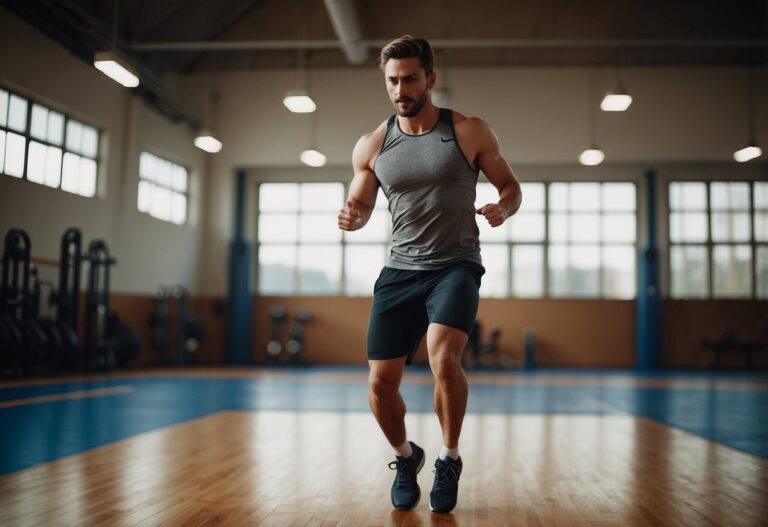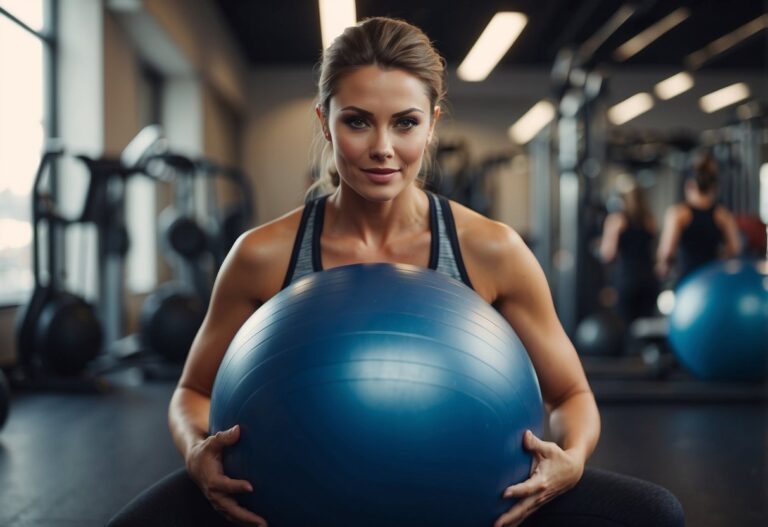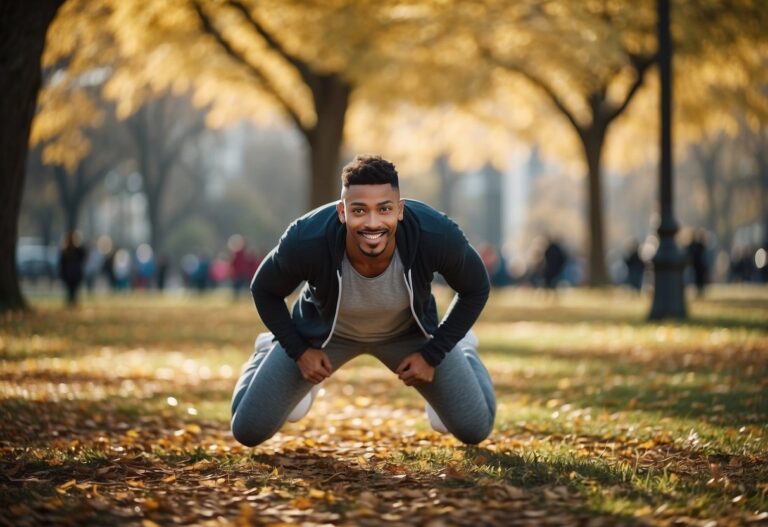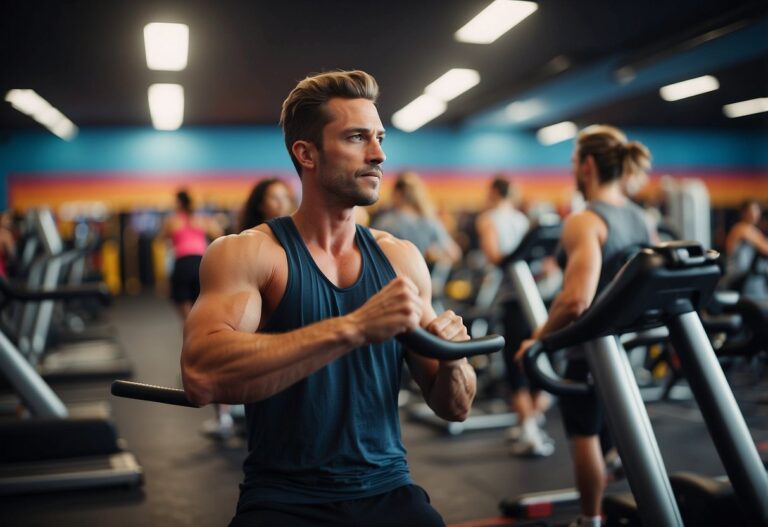Building strong glutes isn’t just about appearance; it’s also key to improving your overall strength and stability. Whether you’re a beginner or a seasoned athlete, focusing on your glutes can enhance your performance in various activities. Why should you care about glutes workouts? Because strong glutes help prevent injuries and improve your posture, which is essential for any fitness journey.

You might have seen various exercises and programs claiming to be the best for building your glutes. With so much information, it’s easy to feel overwhelmed. Don’t worry; we’re here to guide you through practical and effective tips to make your workouts more efficient and enjoyable.
Squats
Squats are a great exercise for your glutes. They not only help build muscle but also improve strength and stability. When doing squats, ensure you keep your feet shoulder-width apart. Lower yourself as if you are about to sit in a chair, focusing on pushing your hips back.
To really target your glutes, try sumo squats. They involve a wider stance, which helps activate the glutes more. Another variation is the Zercher squat, where you hold the barbell in the crook of your elbows for a different challenge.
Incorporating these variations can make your squat routine more effective and engaging.
Deadlifts

Deadlifts are a fantastic exercise to build your glutes. They engage your entire posterior chain, including your glutes, hamstrings, and lower back.
A basic conventional deadlift is done by lifting a weighted barbell from the ground to your hips. It’s essential to keep your back straight and use your hips to drive the motion.
A popular variation is the trap bar deadlift. Using a hex bar, you stand inside the bar and lift. This variation reduces lower back strain, making it a safer option for beginners.
Single leg Romanian deadlifts are great for isolating the glutes. Balancing on one leg, you lower a weight while keeping your other leg straight and raised behind you. This helps improve balance and glute activation.
Incorporate these deadlift variations into your routine to maximise glute gains. For proper form and tips, consider these exercises: best deadlifts for glutes.
Try adding a mix of these variations to your workout to keep things interesting and challenging.
Lunges
Lunges are a fantastic exercise for your glutes. They help build strong, toned muscles. Start by stepping one leg back, landing on the ball of your foot. Most of your weight should be on the front leg. Your back knee should lightly touch the ground.
Reverse lunges are great for your joints and focus more on the glutes and hamstrings. They are a safer alternative to forward lunges. To do a reverse lunge, step one leg back and lower your body. This shifts the work to your glutes.
Try a Bulgarian Split Squat Lunge to increase your range of motion. Place a bench behind you for this advanced variation. It’s great for hitting your glutes hard.
Mixing lunge variations can keep your workout interesting. Think about how these exercises feel and adjust as needed to target your glutes effectively.
Glute Bridges
Glute bridges are a fantastic exercise for targeting your glutes. They are simple to perform and highly effective.
To get started, lie on your back with your knees bent and feet flat on the floor. Your heels should be about 6 inches from your glutes. Place your arms by your sides.
Now, squeeze your glutes and engage your core. Lift your hips up towards the ceiling until your body forms a straight line from your knees to your shoulders. Be careful not to arch your back.
Pause for a moment at the top. Feel that squeeze in your glutes. Then, slowly lower your hips back to the starting position.
For a more advanced version, try the barbell glute bridge. Place a loaded barbell across your hips to increase the resistance. This variation allows you to use significantly more weight.
You can also try holding the bridge position for 20 to 30 seconds. This is known as the glute bridge hold. It adds an extra challenge for your core and glutes.
Give glute bridges a try in your next workout. They might just be the boost your routine needs!
Step-ups
Step-ups are a fantastic exercise for your glutes. To start, you’ll need a sturdy bench or a plyo box. Stand with your feet shoulder-width apart in front of the bench.
Place your right foot on the bench. Push through your heel to lift your body up. Keep your torso upright. Bring your left foot to meet the right on top of the bench.
Step back down with your left foot first. Then, lower your right foot. Control your movement on the way down for the best glute activation.
For an added challenge, try holding dumbbells by your sides. This increases resistance and improves muscle engagement.
Always focus on form to avoid injury and maximise results. Keep your core engaged and avoid leaning forward. Try to perform step-ups slowly and with control.
Hip Thrusts
Hip thrusts are excellent for building strong glutes. To perform them, start by sitting on the ground with your upper back against a bench. Place a barbell across your hips.
Push through your heels to lift your hips towards the ceiling. Squeeze your glutes at the top, making sure not to overextend your lower back. Then, lower your hips back down in a controlled manner.
You can also try adding an isometric hold at the top by holding the position for at least one second. This helps to engage your muscles even more, making the exercise more effective.
Bulgarian Split Squats
Bulgarian split squats are brilliant for targeting your lower body, especially the glutes and quads. By working one leg at a time, you can improve balance and coordination. To perform this exercise, stand two to three feet in front of a bench. Place one foot on the bench behind you.
Keep your torso upright and squat down until your back knee almost touches the floor. Your front thigh should be parallel to the ground, forming a 90-degree angle at the knee.
As you stand back up, drive through your front heel. This helps engage your glutes even more. For an extra challenge, you can add weights or elevate your front foot. This variation increases the range of motion and makes your muscles work harder.
Don’t forget to tighten your core throughout the movement. This not only stabilises your body but also protects your spine. If you lean slightly forward while squatting, you can hit your glutes harder, as suggested here.
Are you focusing on unilateral strength? Doing Bulgarian split squats can help correct muscle imbalances between your legs, which is crucial for overall symmetry and muscle health. For more on this, check out the exercise’s benefits here.
Resistance Band Walks
Resistance band walks are a fantastic way to work your glutes. Start by placing a resistance band around your ankles or just below your knees.
Stand with your feet about hip-width apart. Keep some tension on the band so it doesn’t slip. Take small, controlled steps to the side, maintaining the tension.
Focus on keeping your back straight. This move helps target the gluteus medius and minimus. You’ll feel a burn in the outer part of your glutes.
Single-leg Deadlifts
Single-leg deadlifts are a fantastic exercise for targeting your glutes.
To do this exercise, stand with your feet hip-width apart. Shift your weight onto your right leg, and bend it slightly. Hold a dumbbell in each hand in front of your hips. Lower the dumbbells along your right leg as you lift your left leg behind you. Keep your hips square to the floor.
This move helps with balance and coordination. It’s also great for working on unilateral strength, which is important for preventing imbalances. Single-leg deadlifts can also enhance your performance in sports that require quick, powerful movements.
Give it a try next time you’re in the gym!
Reverse Hyperextensions
Reverse hyperextensions are great for your lower back and glutes. You lie face down on a pad with your hips at the edge. This exercise helps strengthen your lower back muscles and improves posture.
To do a reverse hyperextension, start by getting into a prone position. Keep your legs straight and relaxed, then lift them until they’re in line with your body. Focus on using your glutes and lower back muscles to control the movement.
Doing reverse hyperextensions regularly can help you maintain a strong and healthy back. If you’re looking to build a powerful posterior chain, this exercise is a must-try.
Give it a go and see how it can improve your workout routine.
Anatomy And Function Of The Glutes
The glutes are crucial muscles for many daily movements and athletic activities. Understanding their structure and role will help you target them more effectively in your workouts.
Muscle Groups In The Glutes
Your glutes consist of three key muscles: the gluteus maximus, gluteus medius, and gluteus minimus. The gluteus maximus is the largest of the three, forming the bulk of the buttocks. It plays a significant role in extending and rotating the hip, which is essential for movements like standing up from a sitting position or climbing stairs.
The gluteus medius lies above the gluteus maximus and is responsible for abducting the thigh, meaning it moves your leg away from the body’s centre line. This muscle helps stabilise your pelvis when you walk or run, making it crucial for maintaining balance.
The smallest muscle is the gluteus minimus, located beneath the gluteus medius. Despite its size, it works hard to assist the gluteus medius in abducting and internally rotating the thigh. Together, these three muscles provide the necessary power and stability for various complex movements.
Role Of The Glutes In Movement
The glutes play an essential role in many lower body movements. When you perform exercises like squats or lunges, your glutes are heavily engaged. For instance, the barbell hip thrust specifically targets the gluteus maximus, allowing you to lift substantial weights and develop significant strength in this area (source).
In activities such as running or jumping, the glutes generate the power needed to push off the ground. The gluteus medius and minimus, on the other hand, are vital for stabilising your hips and pelvis, preventing excessive side-to-side movement.
Strong glutes also help improve your posture. They support your lower back and pelvis, which can alleviate lower back pain and improve your overall comfort whether you are standing, walking, or sitting. Engaging in glute-strengthening exercises can greatly benefit your athletic performance and everyday life.
Common Glute Training Mistakes
When working out your glutes, avoiding common mistakes can make a significant difference in your results. Paying attention to form, not overtraining, and warming up properly are essential to maximise gains and prevent injuries.
Improper Form
One of the biggest errors in glute training is improper form. Incorrect form not only reduces the effectiveness of your workout but can also lead to injuries. For instance, in exercises like the glute bridge, pushing through your toes rather than your heels can reduce glute activation.
Ensure you’re maintaining a neutral spine and not letting your knees cave in during squats or lunges. Keeping your torso slightly forward during a reverse lunge can also help target the glutes more efficiently. Always remember to engage your core to stabilise your body and keep your movements controlled.
Overtraining
Another common mistake is overtraining. While it might seem like more is better, overworking your glutes can lead to fatigue and muscle strain. Muscles need time to recover to grow stronger, and training them too frequently without sufficient rest can hinder progress.
Include rest days in your workout plan and listen to your body. If you start feeling persistent soreness or fatigue, it might be time to scale back. A balanced routine, with 2-3 glute-focused sessions per week, allows for effective training without the risk of overtraining.
Neglecting Warm-Up
Skipping a warm-up is a mistake that can set you up for injury and reduce workout effectiveness. A proper warm-up increases blood flow to the muscles, making them more pliable and ready for exercise. Dynamic stretches and mobility exercises should be part of your warm-up routine.
For example, performing leg swings, hip circles, or bodyweight squats for a few minutes can prepare your glutes for the workout ahead. Not warming up properly can leave your muscles stiff and more prone to strains and tears. Prioritise your warm-up to start your workout on the right foot.
Optimising Glute Activation
To get the most out of your glute workouts, focus on establishing a strong mind-muscle connection and effectively using resistance bands. These strategies help ensure you’re engaging your glutes properly and maximising your efforts.
Importance Of Mind-Muscle Connection
Building a strong mind-muscle connection is crucial for effective glute activation. This involves concentrating on the muscle you are working on to ensure it’s fully engaged during exercises. Try to visualise your glutes contracting with each movement.
When performing glute exercises like bridges or clamshells, slow down your movements and focus on feeling each contraction. This can be the difference between a mediocre workout and a great one. When you squeeze your glutes, hold the contraction for a few seconds before releasing. This added focus can help create a stronger connection between your brain and muscles, leading to better results.
If you’re struggling to feel your glutes working, consider adjusting your form. Small tweaks can make a big difference. For instance, during squats, make sure your weight is in your heels and your chest is up. This helps target the glutes more effectively.
Utilising Resistance Bands
Resistance bands are an excellent tool for enhancing glute activation. They add extra resistance, which helps in engaging your muscles more thoroughly. Bands come in different strengths, so start with a lighter band and gradually increase the resistance as you get stronger.
To use bands effectively, incorporate exercises like banded squats and standing kickbacks. For banded squats, place the band just above your knees. Keep tension in the band as you squat down and push back up. Ensure your knees do not cave inwards to maintain proper form.
Standing kickbacks are another great exercise. Stand with feet hip-width apart, place the band around your ankles, and kick one leg back while keeping your glutes tight.
Using resistance bands not only helps in better glute activation but also adds variety to your workouts, making them more challenging and effective.







